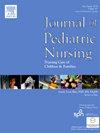父母对子女癌症诊断的决策冲突、焦虑和感知关怀参与的看法:一项纵向研究
IF 2.3
4区 医学
Q2 NURSING
Journal of Pediatric Nursing-Nursing Care of Children & Families
Pub Date : 2025-09-23
DOI:10.1016/j.pedn.2025.09.014
引用次数: 0
摘要
目的探讨(1)父母决策冲突、焦虑与感知关怀投入的关系;(2)儿童癌症诊断后各变量的纵向轨迹。设计与方法一项前瞻性纵向研究包括入组后一个月内新诊断为癌症的儿童家长(20岁)。在诊断时和诊断后1、3、6个月分别测量决策冲突、感知护理介入和焦虑。结果86.7%的家长在诊断时焦虑得分大于41分。焦虑在3个月(β = - 5.88, p < 0.01)和6个月(β = - 6.88, p≤0.01)时显著降低。除有效决策评分在1个月时高于诊断时(β = 9.38, p < 0.01)外,在决策冲突或感知护理参与方面未观察到显著变化。诊断时较高的焦虑与第1、3和6个月的焦虑得分(均p <; 0.05)和决策冲突得分(均p <; 0.05)显著相关。感知护理参与与决策冲突在不同时间点呈负相关,但与焦虑无关联。结论随着时间的推移,父母焦虑明显减少,但57.1%的父母在6个月时仍然焦虑,而决定冲突和感知照顾参与没有变化。最初的焦虑与后来的焦虑和决策冲突水平有关,更多的父母感知到的照顾参与减少了决策冲突。实践启示:强调父母在孩子癌症治疗过程中的焦虑和决策挑战。建议为这些父母提供早期和持续的心理和决策支持。本文章由计算机程序翻译,如有差异,请以英文原文为准。
Parents' perspectives on decisional conflict, anxiety, and perceived care involvement upon their children's cancer diagnosis: A longitudinal study
Purpose
To examine (1) relationships among parents' decisional conflict, anxiety, and perceived care involvement; (2) the longitudinal trajectories of each variable following their children's cancer diagnosis.
Design and methods
A prospective longitudinal study included parents (> 20 years) of children had been newly diagnosed with cancer within one month of enrollment.
Decisional conflict, perceived care involvement, and anxiety were measured at diagnosis and 1, 3, and 6 months thereafter. Generalized estimating equation and Spearman correlation were used to analyze time effects and their relationship.
Results
86.7 % of parents had anxiety scores greater than 41 at diagnosis. Anxiety decreased significantly at 3 (β = −5.88, p < .01), and 6 (β = −6.88, p ≤0.01) months. No significant change in decisional conflict or perceived care involvement was observed, except the effective decision score was higher at 1 month than at diagnosis (β = 9.38, p < .01). Higher anxiety at diagnosis correlated significantly with 1-, 3-, and 6-month scores for anxiety (all p < .05) and decisional conflict (all p < .05). Perceived care involvement correlated negatively with decisional conflict across timepoints but showed no link to anxiety.
Conclusions
Parental anxiety significantly decreased over time, but 57.1 % of parents were still anxious at 6 months, while decisional conflict and perceived care involvement remained unchanged. Initial anxiety linked to later levels of anxiety and decisional conflict, and more parental perceived care involvement reduced decisional conflict.
Practice implications
Highlight parents' anxiety and decision-making challenges during their children's cancer treatment. Early and ongoing psychological and decisional support for these parents is recommended.
求助全文
通过发布文献求助,成功后即可免费获取论文全文。
去求助
来源期刊

Journal of Pediatric Nursing-Nursing Care of Children & Families
NURSING-PEDIATRICS
CiteScore
3.70
自引率
8.30%
发文量
291
审稿时长
65 days
期刊介绍:
Official Journal of the Society of Pediatric Nurses and the Pediatric Endocrinology Nursing Society (PENS)
The Journal of Pediatric Nursing: Nursing Care of Children and Families (JPN) is interested in publishing evidence-based practice, quality improvement, theory, and research papers on a variety of topics from US and international authors. JPN is the official journal of the Society of Pediatric Nurses and the Pediatric Endocrinology Nursing Society. Cecily L. Betz, PhD, RN, FAAN is the Founder and Editor in Chief.
Journal content covers the life span from birth to adolescence. Submissions should be pertinent to the nursing care needs of healthy and ill infants, children, and adolescents, addressing their biopsychosocial needs. JPN also features the following regular columns for which authors may submit brief papers: Hot Topics and Technology.
 求助内容:
求助内容: 应助结果提醒方式:
应助结果提醒方式:


